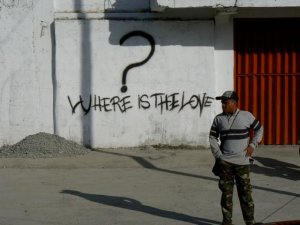Warning: I’m sure some readers may disagree with some of my opinions in this article. I’m ok with that. My hope is that you can look past the opinions to the purpose of my writing; the desire to take discipleship beyond the surface and into the soul.
I see the value in manifesting outward expressions of inward commitments, but focusing too much on the outward appearance can make us superficial, blinding us to our actual purpose as disciples.
Our culture is obsessed with not just trying to be righteous but looking the part too. I’ve been thinking a lot about this because we no longer fit the mold of a “righteous” family since my husband expressed his disbelief. But does righteousness really have only one look?
(About to open a can of worms for some…sorry. I do not mention the following aspects of Church in an effort to debate or prove one way or another as right. I simply want to look at things from a different perspective.)
I’m sure you’ve heard the latest from BYU about “Biking for Beards” (if not, you should read the piece right here on our site that was written by the event’s founder). The event drew national attention to BYU’s honor code policy forbidding beards. As pointed out in the demonstration, it’s rather funny because many of the early leaders wore beards including Brigham Young, himself. Also interesting is the fact that mustaches are acceptable facial hair– perhaps emblematic of the era the “righteous” look was codified. On campus, righteousness looks clean-shaven. To varying degrees, this “righteous look” has become an unofficial “commandment” amongst some leadership. Certainly those pre-1950’s and pre-President David O. McKay members weren’t any less “righteous” for having beards. I don’t feel that facial hair or lack thereof is an indicator of righteousness… unless we are talking about the slang term for righteous, as in “Dude, that beard is righteous!”
How about tattoos? For much of the world, tattoos are a symbol of family ties, seen as a method of healing, or are common individual expressions of beauty. I know of some senior sister missionaries who had their eye makeup tattooed on to express their sense of beauty. Let’s not even mention breast implants. Actually, let’s do! Utah ranks one of the highest in the nation for interest in implants and other cosmetic surgeries (just ask Google if you don’t believe me). Many Utah women (and probably men) seem to be just fine with this expression of beauty. I am neutral when it comes to a person’s decision regarding both of these personal outward expressions, but I feel it odd that as a culture we tend to be against adding a decorative mural to a house but are okay with adding a new front porch.
Now to what I deem one of our most sacred outward expressions of our inward commitment – the garment. Sadly, much of the focus on our underwear has turned to the idea of dressing “modestly” rather than as a reminder of covenants we make with God. We didn’t covenant to cover our shoulders. It just so happens that the current garment design goes over our shoulders, and in an effort to cover our underwear, we wear clothes that cover our shoulders. Stay focused now! I’m not downplaying the importance of modest dress but I recognize that what is perceived as modest is not the same across world cultures. Also, perceptions change and evolve with time, even within the Church (garments used to go to the ankle and wrist). Recently, a friend of mine was a bridesmaid for a wedding where she was asked to wear a dress that would not cover the garment. What did she do? She wore the dress! *gasp* Actually, I didn’t gasp. In fact, I support her personal decision to choose for herself how to wear the garment in her given situation. Just like an athlete or performer who chooses not to wear the garment in certain venues, I believe we can all use our agency and inspiration to determine if and when other situations arise when not wearing the garment may be agreeable. There are many more productive things we could be doing than judging and gossiping about how so-and-so is wearing their underwear wrong.
Really, what I’m trying to say is let’s not be the ones “praying in the streets” or through our actions and judgments building a rameumptom to display how good we are at looking “righteous”. Instead we should focus on cleansing the inward vessel (Alma 60:23) or pulling out our own beams (Luke 6:41).
Consider with me another way to interpret Lehi’s vision of the tree of life. The fruit is the love of God. I believe God’s love can be shared through service, kindness, and charity for all mankind. Do we find ourselves in the great and spacious building mocking those that show up to the tree in culturally inappropriate attire or with the wrong “look” as if there’s only one “true” outward appearance that is acceptable to God? If so, we may need to re-examine our own priorities and actions remembering that the restoration of the gospel wasn’t a fashion restoration. Plus, if it were, we would all show up to sacrament in really cool sandals and robes… oh, yeah, and probably beards.
Samuel 16:7 But the Lord said unto Samuel, Look not on his countenance, or on the height of his stature; because I have refused him: for the Lord seeth not as man seeth; for man looketh on the outward appearance, but the Lord looketh on the heart.
~Guest Post from RL

